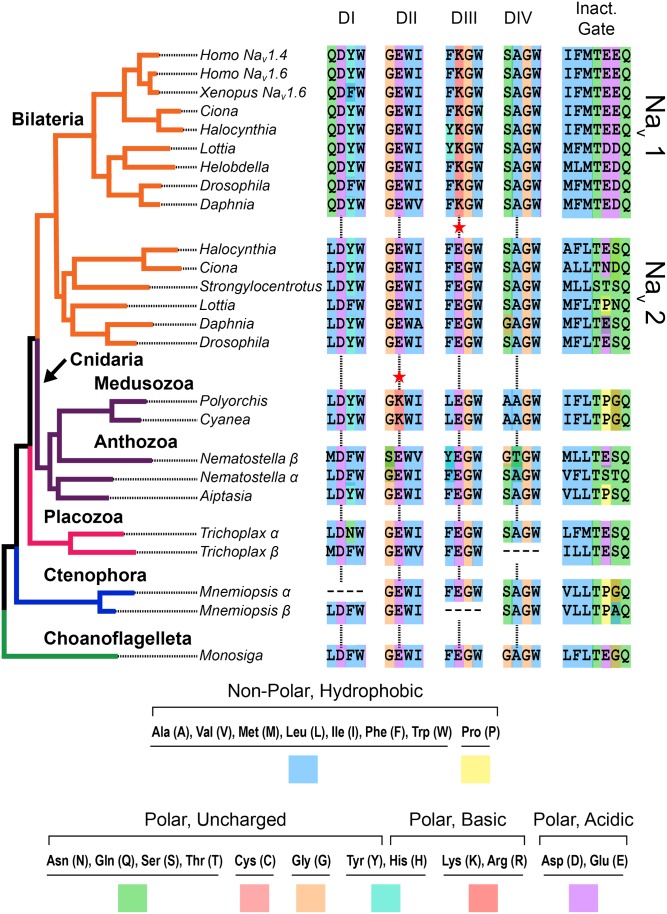Fig. 3.
Maximum likelihood phylogeny of the voltage-gated sodium channel family. The common ancestor of choanoflagellates (represented by Monosiga in green) and animals had a Nav channel that was likely permeable to Ca2+ and Na+ (pore motif = DEEA). This motif is present in the Nav channels of anthozoan cnidaria (anemones, coral) and the Nav2 channel of invertebrates. The presence of a lysine (K) in the pore improves Na+ selectivity (indicated by red star). A lysine is found in the Nav1 channels of bilaterians (DEKA) and Nav channel of medusozoan cnidaria (jellyfish) (DKEA), both of which have more centralized nervous systems than anthozoans and are motile. Additionally, there is strong conservation of a hydrophobic (blue) triplet of amino acids in the “inactivation gate” region. From Liebeskind et al. (16).

